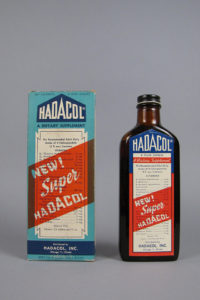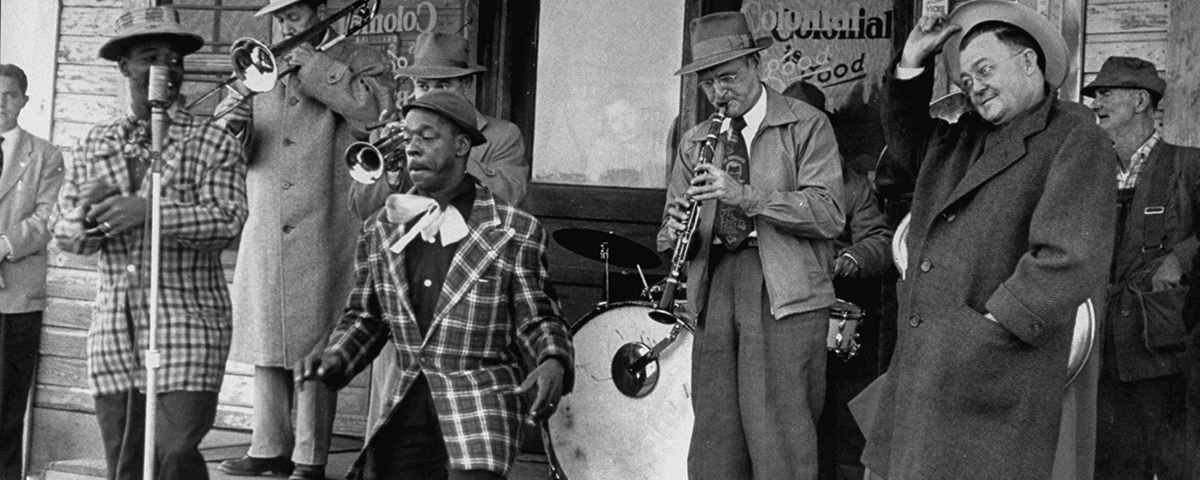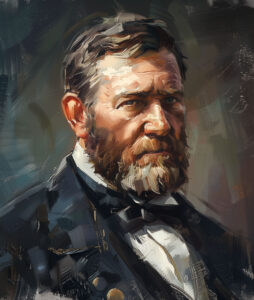Louisiana pol had a salesman’s charm, wit, a and a product with a wicked kick
THE WHOLE CRAZY thing started in 1940 with a pain in his right big toe. The pain spread across Louisiana State Senator Dudley J. LeBlanc’s foot and into his leg. Fancy doctors failed to cure the condition, which by 1943 nearly had crippled their patient. Relief came only when
an old friend, a country doctor, injected a substance that instantly obliterated LeBlanc’s misery. The doctor wouldn’t say what the miracle drug was, so when his pal wasn’t looking LeBlanc swiped a bottle. He analyzed the container’s contents, added a few ingredients, and created his own patent medicine—Hadacol.
At least that’s how Senator LeBlanc told the story. But the senator was known to…um…exaggerate, especially about Hadacol, which made “Dud” LeBlanc rich and famous and got him into legal trouble.

LeBlanc was born in 1894, son of a blacksmith and descendant of French-speaking Canadians who fled to Louisiana in the 1700s to escape British domination. These Acadians came to be called “Cajuns.” Young Dudley, raised in Vermilion Parish speaking Cajun patois, mastered English. Graduating college at 18, he joined the U.S. Army during World War I. He became a salesman, hawking tobacco products, shoes, and patent medicines he’d invented—Dixie Dew Cough Syrup and Happy Day Headache Powder.
Charming and dapper, with the gift of gab in two languages, LeBlanc was elected to the Louisiana House of Representatives in 1924 and, in 1940, to the state senate, where he sponsored a popular old-age pension law. He lost two races for governor but remained a hero to fellow Cajuns, making his endorsement valuable to pols seeking Cajun votes. Ever the entrepreneur, Senator LeBlanc demanded cash for his support and was happy to switch camps for a higher bid.
“Hell, you can’t buy LeBlanc,” said Earl Long, Louisiana’s governor and brother of “Kingfish” Huey. “You can only rent him.”
LeBlanc was a Louisiana legend when Hadacol made him famous across America. He mixed his first batch in wine barrels in his barn, assisted, he said, by two “pretty Cajun girls” who stirred the stuff with oars. Hadacol contained vitamins B-1, B-2, and B-6, plus iron, calcium, citric acid, honey—and about 12 percent alcohol, roughly the kick in wine. The alcohol was a “preservative,” LeBlanc would say. Then he’d grin and chuckle.
Hadacol smelled awful and tasted like swamp—by design. LeBlanc figured people expected medicine to taste bad. He concocted the name from his corporation’s: HAppy DAy COmpany, plus “L” for LeBlanc. But when asked why he named his nostrum Hadacol, he’d smile and, in a Cajun drawl say, “Well, Ah hadda call it sumpin’, didn’ Ah?”
Hadacol debuted in 1945, labeled a “dietary supplement” to avoid the tougher regulations for medicines. LeBlanc advertised it as a balm for vague ailments like indigestion, insomnia, and irritability. He also published testimonials from folks who claimed the stuff had cured arthritis, cancer, and beriberi. An eight-oz.
bottle cost $1.25; the 24-oz. “family economy size,” $3.50. Unsurprisingly, Hadacol was popular in dry locales and with underage drinkers. In 1949, LeBlanc sold $2.5 million—today, about $25 million—worth of his elixir.
He poured his profits into advertising, spending nearly $1 million a month in 1950 for ads in newspapers, on billboards and barns, on radio, and on TV. He published Captain Hadacol comic books. His product’s popularity inspired “The Hadacol Boogie,” a jaunty number by Bill Nettles and his Dixie Blues Boys that in 1949 reached No. 9 on
the country charts proclaiming, “the Hadacol Boogie makes you boogie-woogie all the time.” [YouTube: bit.ly/hadacolboogie] The hoopla sold millions of bottles and spawned countless articles. “LeBlanc,” said Time, “is a stem-winding salesman who knows every razzle-dazzle switch in the pitchman’s trade.”
Time was right: LeBlanc was a publicity powerhouse. In April 1951, President Harry Truman fired General Douglas MacArthur, generating enormous controversy. LeBlanc responded by announcing that he’d be happy to hire MacArthur as vice president of Hadacol. He also offered to hire any parrot able to squawk “Polly wants Hadacol”—and promised that his pitchbird would live in a “gold cage,” traveling America in a limousine with the parrot’s name in gold on the doors.
LeBlanc’s greatest coup was the Hadacol Caravan, an update on the traveling medicine show. In 1950 and again in 1951, LeBlanc dispatched convoys of cars, trucks, and buses packed with singers, dancers, acrobats, and comedians across the South. Hadacol road shows featured big stars—Bob Hope, Mickey Rooney, Chico Marx, Carmen Miranda, and Hank Williams, plus Milton Berle and Minnie Pearl. The price of admission was two Hadacol box tops for adults, and one for kids, and the performances drew enormous crowds. Of course, Hadacol was available at concession stands and advertised on stage, with comedians joking about its alleged powers as an intoxicant and an aphrodisiac. According to legend, Hank Williams wrote “Jambalaya” after listening to the caravan’s Cajuns and their colorful way with language.
In 1951, LeBlanc invaded Los Angeles with truckloads of Hadacol and an army of salesmen. The NBC-TV game show “You Bet Your Life” brought the entrepreneur onstage as a guest. “Hadacol, what’s that good for?” asked host Groucho Marx.
“Well,” LeBlanc replied, grinning impishly, “it was good for $5 million for me last year.” [YouTube: bit.ly/hadacolgroucho]
He was…um…exaggerating. Hadacol had grossed millions, but LeBlanc spent most of that money on ads and caravans. By then, the cagey Cajun knew his business was tanking. He owed huge sums in taxes and the Federal Trade Commission was investigating him for deceptive sales practices. He decided to unload the company before it collapsed.
In September 1951, LeBlanc announced that he’d sold his Hadacol corporation to a group of New York businessmen for $8 million. Later, he said the actual price was $250,000, plus a chunk of future profits. Either way, the buyers got snookered. The company they bought owed suppliers $2.2 million and more than $650,000 in federal taxes. They ended up bankrupt. LeBlanc shrugged. “If you sell a cow and the cow dies,” he said, “you can’t do anything to a man for that.”
LeBlanc may have bamboozled New York City slickers but that didn’t translate into votes at home: He finished seventh in the 1952 Louisiana Democratic primary for governor. Meanwhile, the feds were investigating and, in 1957, they charged him with tax evasion. LeBlanc beat that rap. He was now flogging another patent medicine, which he called “Kary-On.” His new joy juice resembled Hadacol, except for one key difference: hardly anybody wanted to buy it.





